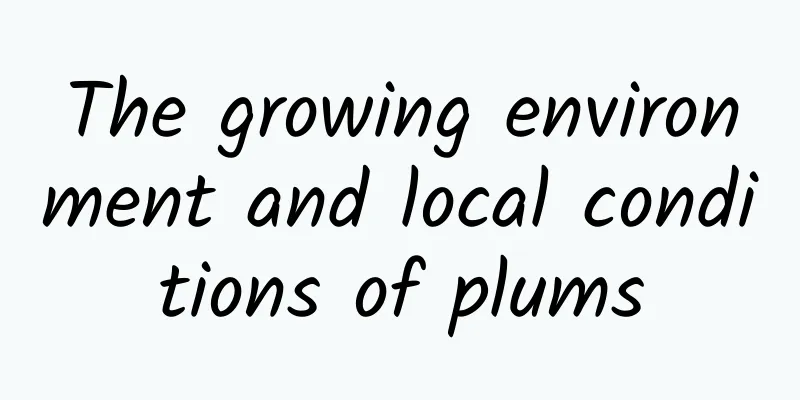The growing environment and local conditions of plums

Plum Growth Environment and ConditionsPlums are highly adaptable to soil that has a deep layer of soil, a certain degree of fertility, and slightly better drainage, and can be planted in any soil type. It is produced in Liaoning, Jilin, Shaanxi, Gansu, Shandong, Sichuan, Yunnan, Guizhou, Hunan, Hubei, Jiangsu, Zhejiang, Jiangxi, Fujian, Guangdong, Guangxi and Taiwan. It is commonly found in areas with an altitude of 400-2600 meters. It generally grows in hillside bushes, sparse woods in valleys, or by water, at the bottom of ditches, on roadsides, etc. It is distributed in both southern and northern China. Plum Growing ConditionsPlums prefer a moist environment with high air humidity and are extremely intolerant of waterlogging. Poor drainage in the orchard will lead to root rot, poor growth or more diseases. It is advisable to choose a place with loose soil, good drainage and air permeability, deep soil layer and low groundwater level for planting. Plum growing temperatureBefore the plums sprout, the temperature should be 15℃~22℃ during the day and not lower than 0℃ at night. The maximum temperature before flowering should not exceed 24℃ and the minimum should not be lower than 5℃. Note that you must do a good job of keeping warm at this time. Plum planting time and methodThe best time to plant plum seedlings in southern China is from November of the current year to early March of the following year. The seeds need to be germinated before planting. After planting in the soil, they should be covered with a thin layer of soil. You can use a spray bottle to spray a little water. After about five or six days, they will germinate and can be transplanted. The fruit setting rate of plums is relatively low, so pollination trees need to be configured during planting. Fruit-enhancing fertilizer needs to be applied during the hard core period when the fruit is forming the pit. The amount of fertilizer used accounts for 30% of the annual fertilizer application. The fruit-enhancing fertilizer is mainly fully decomposed compost, which can promote the enlargement of the fruit. |
<<: The growing environment and local conditions of Amomum villosum
>>: The growth environment and local conditions of bamboo fungus
Recommend
Why does red silk melt into water?
1. Insufficient sunlight The red silk may be molt...
When is the best time to transplant chives?
Chives are more suitable for growing in loose soi...
North American holly cultivation methods and precautions
Holly , also known as whorled holly or American h...
When does the cardinal coral bloom?
Flowering period of red cardinal coral The flower...
Can laundry detergent be used to water flowers? What are the benefits of watering flowers?
Can laundry detergent be used to water flowers? L...
How to grow the succulent winter beauty
Winter Beauty Growth Conditions Winter beauty has...
What is the crop of Yumai?
What kind of crop is Yumai? Yumai refers to oats,...
Disease and insect pest control of black rice
Pests: Red spider mites Red spider mites are also...
What to do if the amaryllis is stuck with an arrow
Causes of Arrow Trapping Amaryllis has a relative...
Can I grow a papaya tree at home?
Can I grow a papaya tree at home? Papaya trees ca...
How to cultivate iron tree
Cycad growth conditions The iron tree likes light...
Cutting propagation method of Yalong wood
Cutting propagation time of Yalong wood It is bes...
What kind of trees should be planted on both sides of the door?
1. Palm It is a tree that does not lose its leave...
Pictures of winter jasmine (introduction to morphological characteristics and maintenance methods)
1. Morphological characteristics 1. Leaves: The l...
How often should passion fruit be watered?
How often should passion fruit be watered? Passio...









